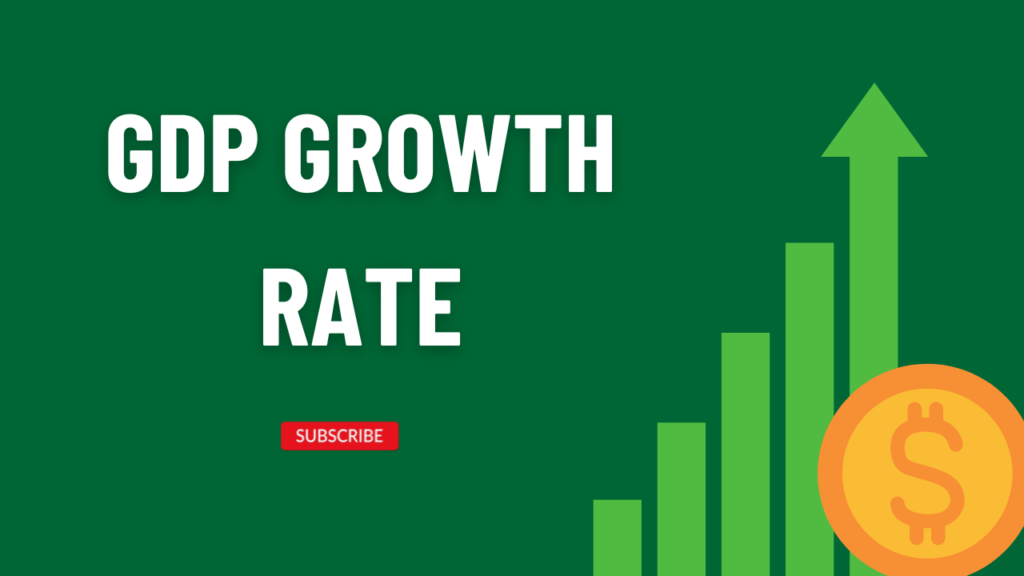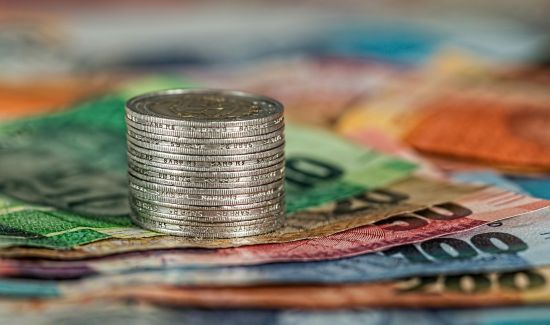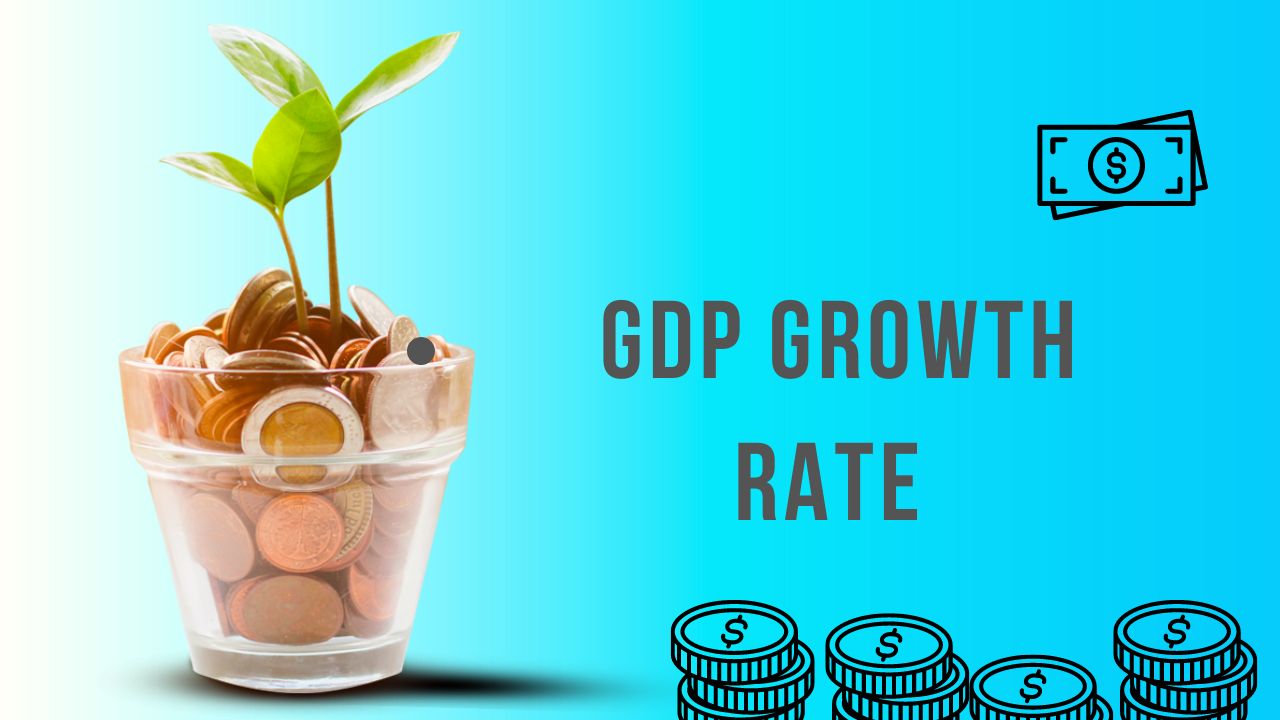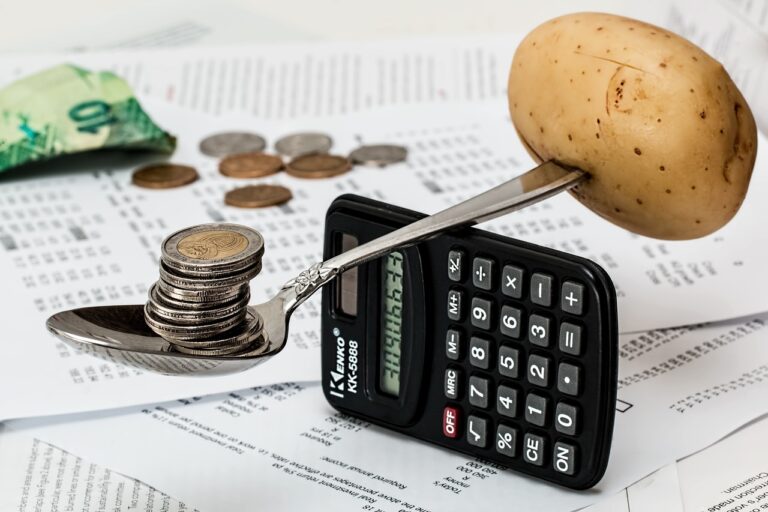GDP Growth Rate, The Ultimate Guide to Understanding and Calculating GDP Growth Rate in 2023
The Gross Domestic Product (GDP) stands as a pivotal indicator used in assessing the overall health of an economy. It offers a snapshot of a nation’s economic performance, shedding light on its production levels and growth rate. Acquiring an understanding of GDP and the methods for calculating its growth rate holds significant importance for economists, policymakers, investors, and individuals interested in a country’s financial well-being. This in-depth guide will lead you through the core principles of GDP, the techniques utilized in its calculation, and the accurate determination of GDP growth rate.
Table of Contents
What is GDP?

“Gross Domestic Product (GDP)” is a crucial metric used to assess a country’s economic well-being, providing valuable insights into its economic performance and expansion. A thorough comprehension of GDP and its growth rate is essential for economists, policymakers, investors, and anyone concerned about a country’s financial strength. This in-depth guide explores the fundamentals of GDP, calculation methods, and the accurate determination of the GDP growth rate. GDP represents the total monetary value of all goods and services produced within a country’s borders in a specific period. It includes consumer and government spending, business investments, and net exports, serving as a comprehensive measure of a nation’s overall economic activity.
The GDP is a crucial indicator as it reflects the economic strength of a country. A rise in GDP signifies economic expansion, while a decrease may signal economic difficulties, affecting factors such as unemployment and income levels. Governments and central banks rely on GDP data to make well-informed decisions about monetary and fiscal policies, while investors closely track GDP growth rates to evaluate potential risks and returns in a specific country. Furthermore, GDP per capita is commonly used to compare the standard of living across different countries.
It’s essential to have a good grasp of various types of GDP, such as Nominal GDP, Real GDP, GDP Per Capita, and Purchasing Power Parity (PPP) GDP, in order to accurately interpret economic data.
The GDP growth rate measures the speed at which an economy is expanding and is determined by comparing the current GDP to the GDP of the previous period. This rate, expressed as a percentage, is a crucial economic indicator that reflects a nation’s overall economic activity, encompassing everything from consumer spending and government expenditures to business investments and net exports.
Understanding GDP requires breaking it down into its key components:
1. Consumer Spending (C): This encompasses the total value of goods and services consumed by households, and it often constitutes the largest portion of GDP and GDP growth rate.
2. Government Spending (G): This includes all government expenditures on goods and services, excluding transfer payments such as pensions and unemployment benefits.
3. Business Investment (I): Business investments refer to expenditures by businesses on capital goods that will be used for future production. This includes purchases of machinery, buildings, and technology.
4. Net Exports (NX): Net exports are calculated by subtracting the value of a country’s imports from its exports. A positive net export indicates that a country sells more goods and services abroad than it purchases from foreign countries. The formula for calculating GDP is:
Please take note of the following information:
GDP = C + G + I + (X – M)
Where:
– C represents consumer spending,
– G denotes government spending,
– I stand for business investment,
– X signifies exports, and
– M represents imports.
The Significance of GDP

The Gross Domestic Product (GDP) serves as a crucial measure reflecting the economic health of a nation. An increasing GDP growth rate is typically associated with a buoyant economy, while a decreasing GDP may point to economic difficulties. Here’s why GDP holds significance:
1. Reflection of Economic Prosperity
A rising GDP growth rate, signifies economic expansion, business growth, and the generation of more employment opportunities. Conversely, a declining GDP can warn of economic shrinkage, potentially resulting in escalated unemployment and decreased income levels.
Please keep the following text in mind:
2. Importance in Policy Making
Governments and central banks rely on GDP and GDP growth rate data to make well-informed decisions about monetary and fiscal policies. For example, during a period of slow economic growth, a government might introduce stimulus measures to increase spending and investment.
3. Impact on Investor Confidence
Investors closely track GDP growth rates to assess potential risks and returns in a specific country. A robust GDP growth rate can attract foreign investments, while a weak growth rate may discourage investors.
4. Indicator of Standard of Living
GDP per capita, calculated as GDP divided by the population, is often utilized to compare the standard of living between different countries. A higher GDP per capita indicates a higher standard of living.
Understanding the various types of Gross Domestic Product (GDP) is crucial for accurately interpreting economic data. The main types are outlined below:

1. Nominal GDP: Measures the value of all finished goods and services produced within a country’s borders at current prices. It does not account for inflation, which can distort the true economic growth.
2. Real GDP: Adjusts nominal GDP for inflation, providing a more accurate reflection of an economy’s size and its growth over time. This is achieved by using a base year’s prices to calculate GDP, which removes the effects of price changes.
3. GDP Per Capita: Divides the total GDP by the population, giving an average economic output per person. This measure is particularly useful for comparing the economic performance of different countries.
4. Purchasing Power Parity (PPP) GDP: Adjusts for differences in price levels between countries, providing a more accurate comparison of living standards. It reflects the amount of goods and services that can be purchased with the same amount of money in different countries.
Certainly! Below is an improved version of the text:
How to Calculate GDP Growth Rate
The GDP growth rate is a crucial economic indicator used to measure the pace of economic growth. Typically expressed as a percentage, it is calculated by comparing the current GDP to the GDP from the previous period.
Basic Formula
The formula to calculate the GDP growth rate is:
GDP Growth Rate = [(GDP in the current period – GDP in the previous period) / GDP in the previous period] x 100
Step-by-Step Calculation
1. Calculate the GDP for the Current Period: This refers to the GDP value for the specific time period under examination, such as a quarter or a year.
2. Calculate the GDP for the Previous Period: This indicates the GDP value for the period immediately preceding the current period.
3. Subtract the Previous Period’s GDP from the Current Period’s GDP: This step yields the absolute change in GDP.
4. Divide the Difference by the Previous Period’s GDP: This calculation transforms the change into a proportion of the previous period’s GDP.
5. Multiply by 100: This calculation converts the proportion into a percentage, providing the GDP growth rate.
Here’s a revised version of the example calculation for the GDP growth rate:
Assuming the GDP of a country in 2023 was $6 trillion and in 2022 it was $5.8 trillion, the GDP growth rate would be calculated as follows:
GDP Growth Rate = [($6 trillion – $5.8 trillion) / $5.8 trillion] x 100
GDP Growth Rate = [$0.2 trillion / $5.8 trillion] x 100
GDP Growth Rate = 3.44%
This indicates that the economy grew by 3.44% from 2022 to 2023.
Key Factors Influencing GDP Growth Rate

1. Consumer Confidence and Spending
Consumer confidence plays a crucial role in driving the GDP growth rate. Higher consumer confidence usually results in increased spending, which in turn boosts the GDP. Conversely, economic uncertainty might lead to reduced consumer spending, thereby dampening GDP growth.
2. Government Policies
Government fiscal policies, such as changes in taxation and public spending, can directly impact the GDP growth rate. For instance, tax cuts can bolster disposable income, leading to increased consumer spending and stimulating economic growth.
3. Interest Rates
Central banks wield influence over the GDP growth rate, through monetary policies. Lower interest rates can spur borrowing and investment, ultimately contributing to higher GDP growth, while higher interest rates may have the opposite effect.
4. Global Economic Conditions
The global economic climate can significantly impact a country’s GDP growth rate. For example, during a global recession, reduced demand for exports can decelerate GDP growth in export-reliant economies.
5. Technological Advancements
Technological innovations and improvements can enhance productivity, paving the way for a higher GDP growth rate. Countries that prioritize investments in technology and innovation often experience accelerated economic growth.
Please recall the following information.
Conclusion
Comprehending and computing the GDP growth rate is crucial for anyone interested in economics, finance, or policymaking. GDP offers a thorough measure of a country’s economic activity, and its growth rate serves as a key indicator of economic well-being. By mastering the components of GDP, the different types of GDP, and the factors influencing GDP growth, you can better interpret economic data and make well-informed decisions. Whether you’re an investor, a student, or just curious about economics, possessing a solid understanding of GDP and its growth rate is invaluable. The following YouTube video also highlights how to calculate the GDP growth rate.







